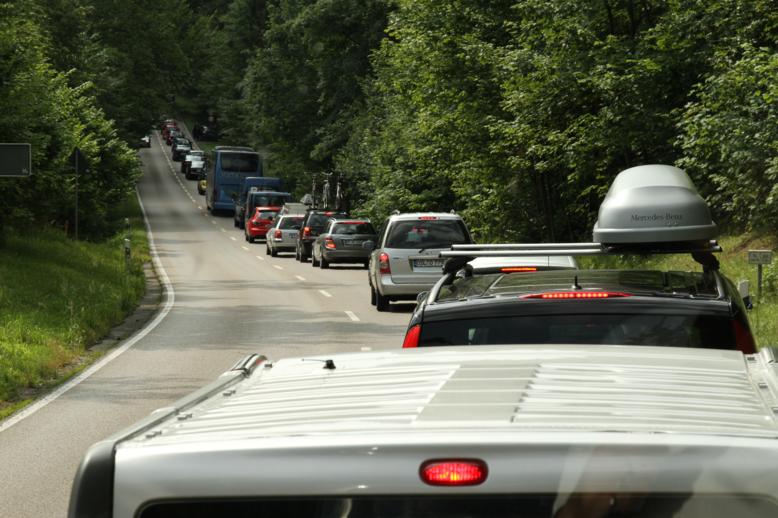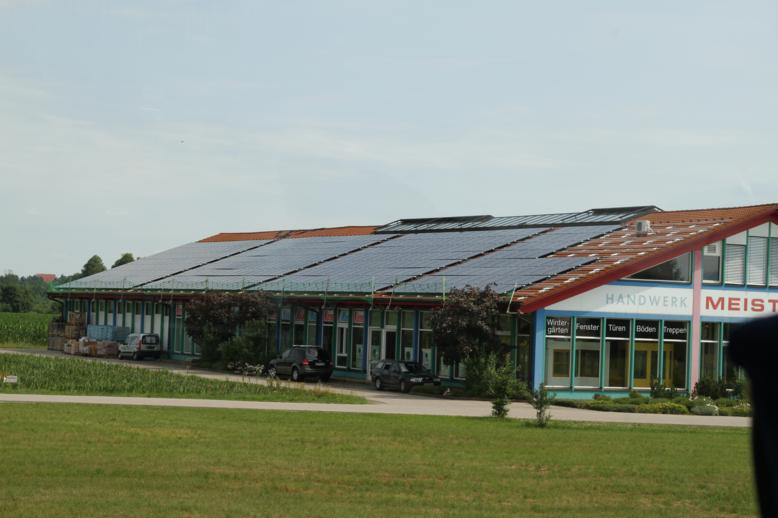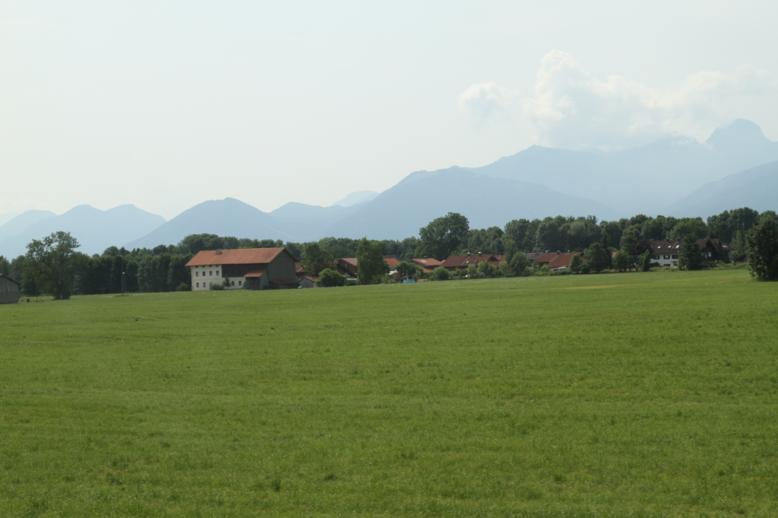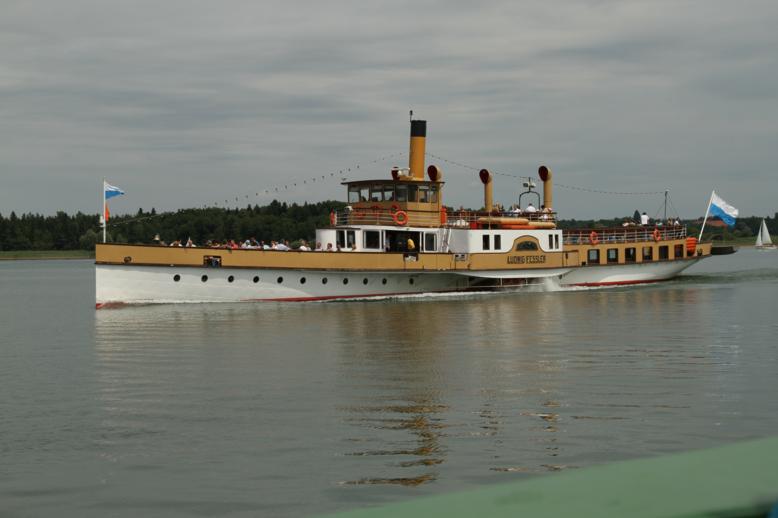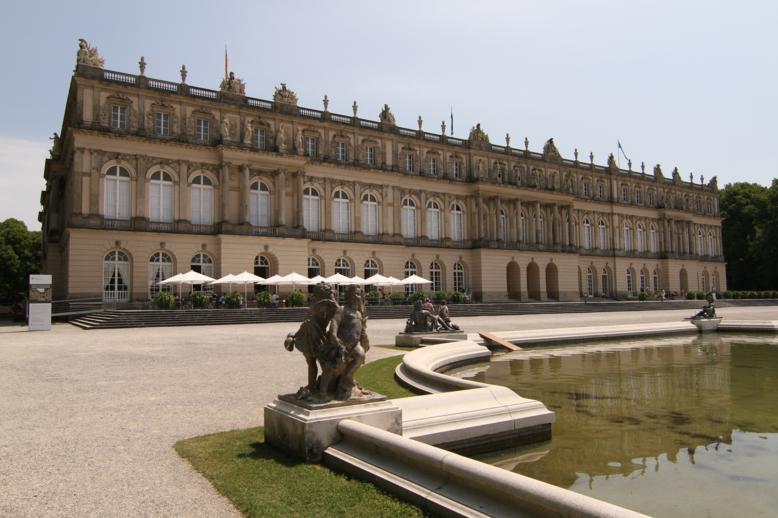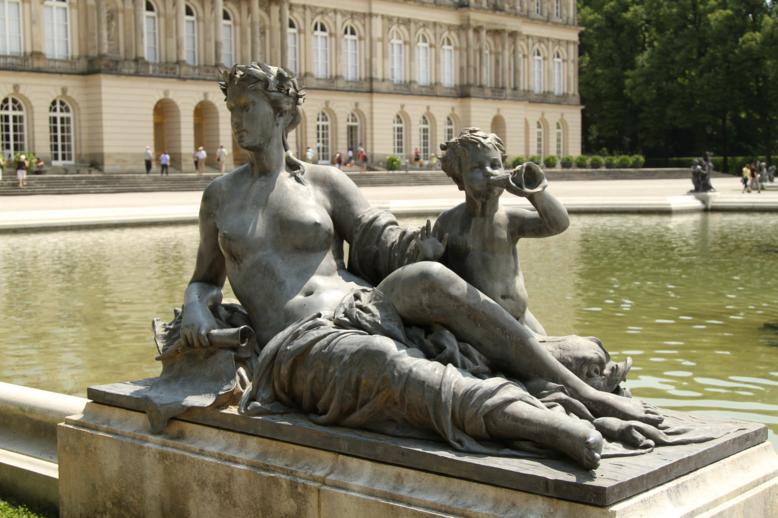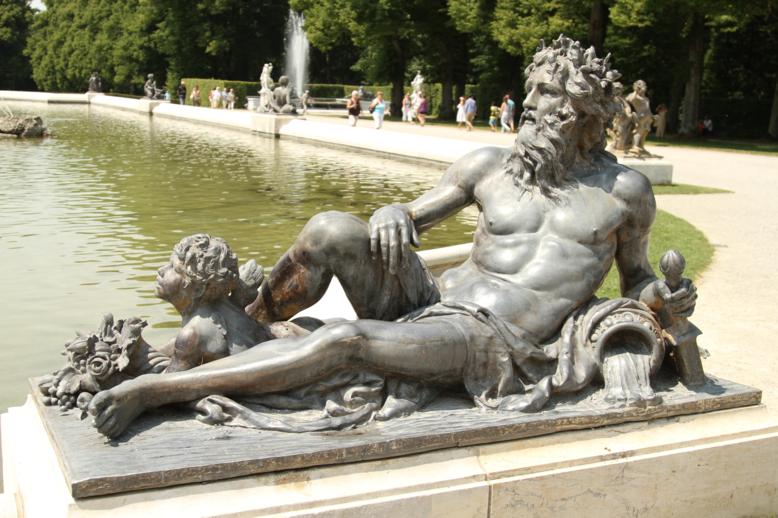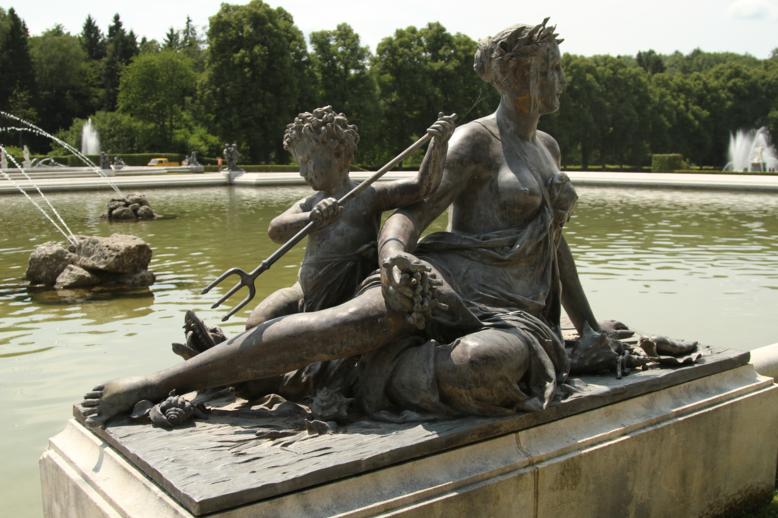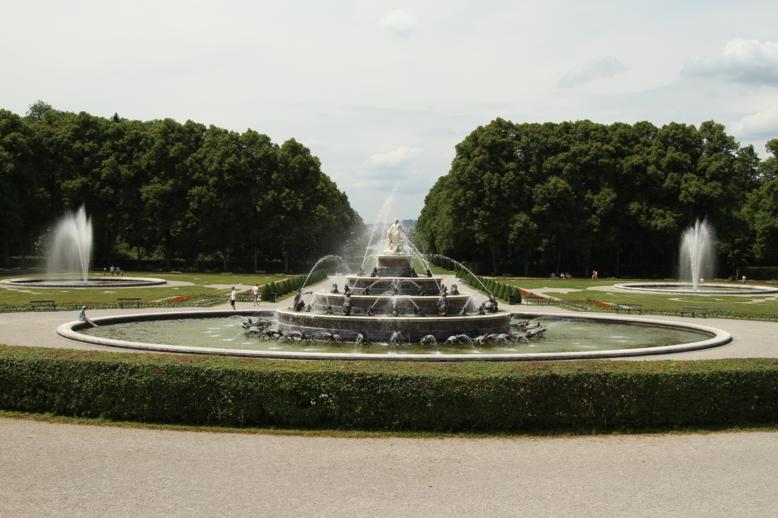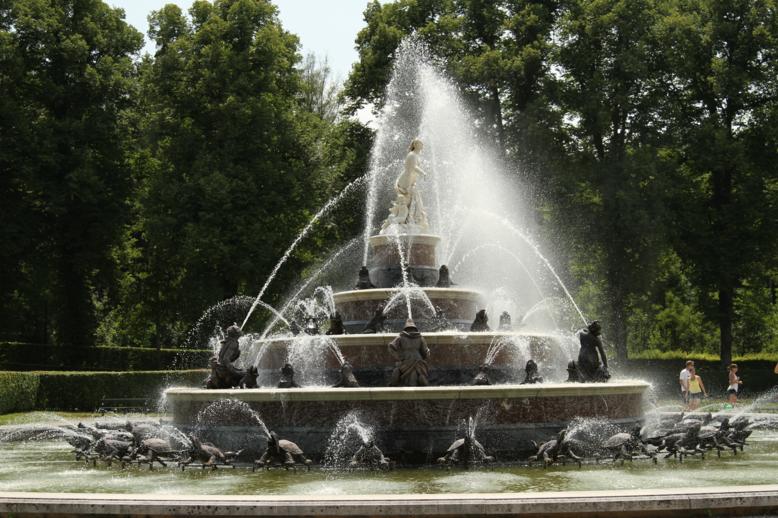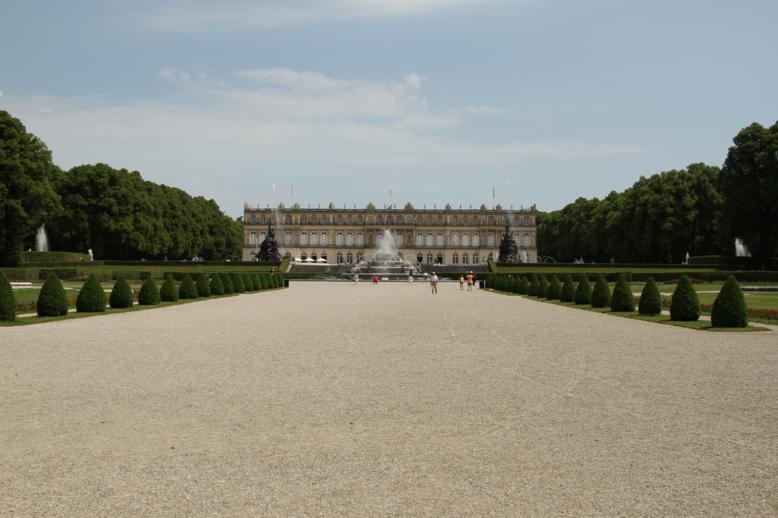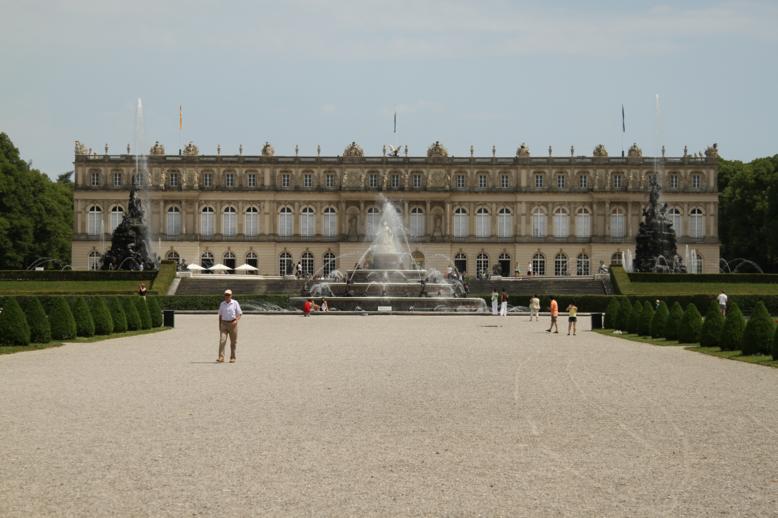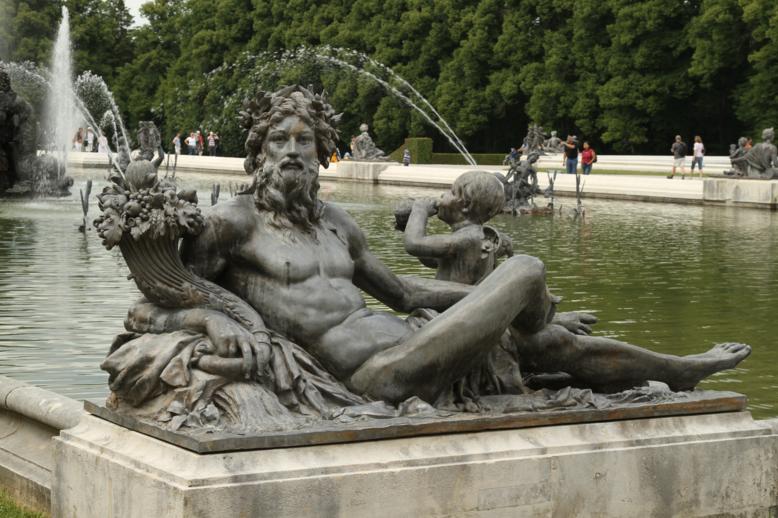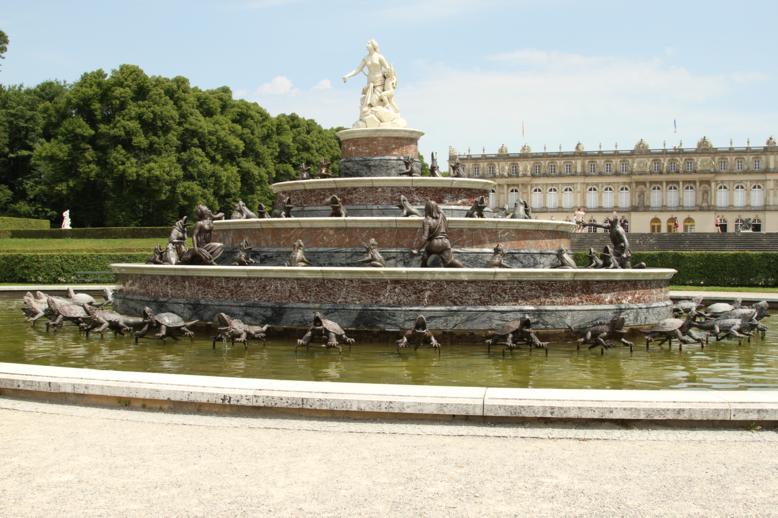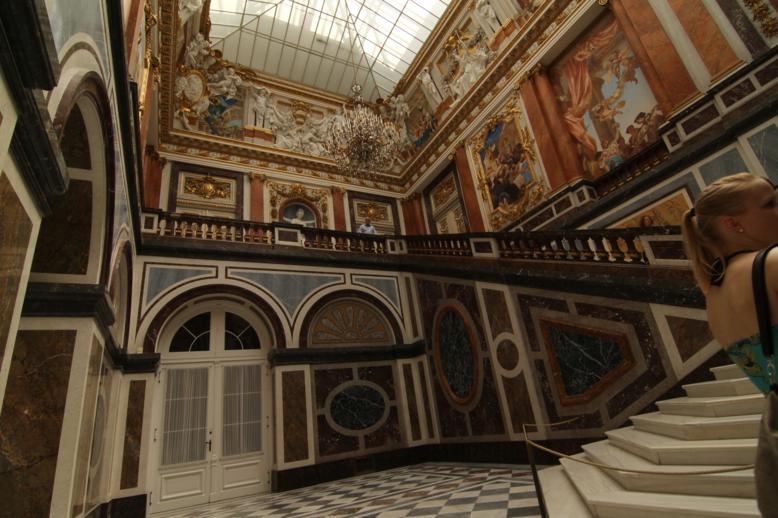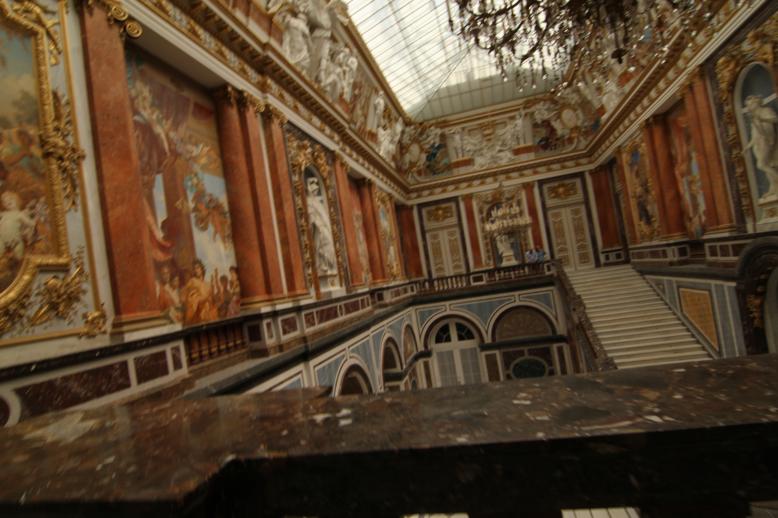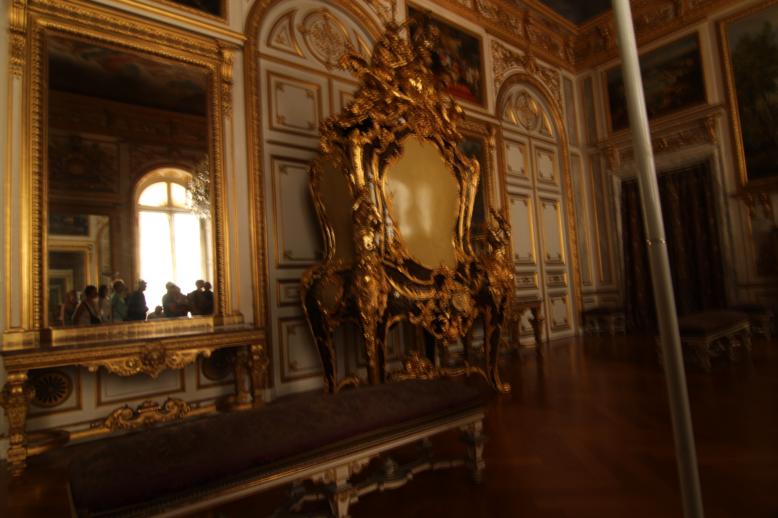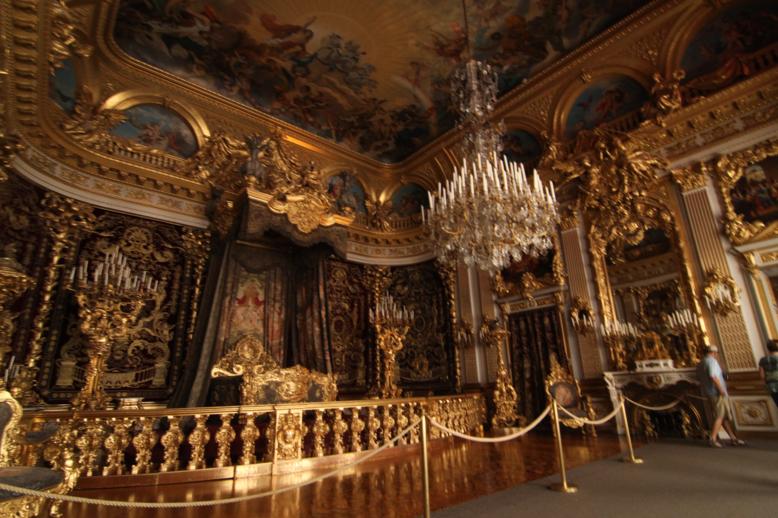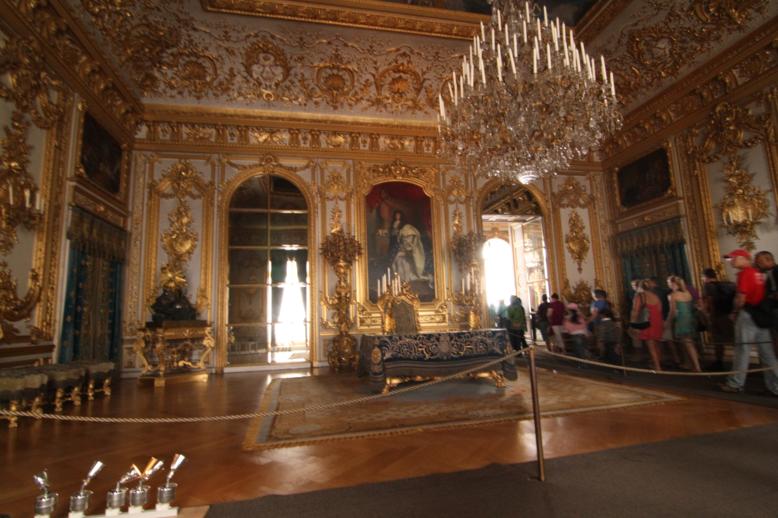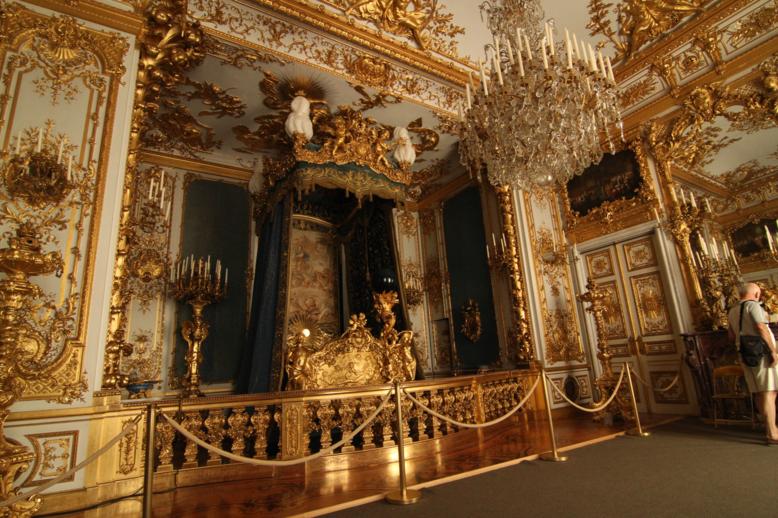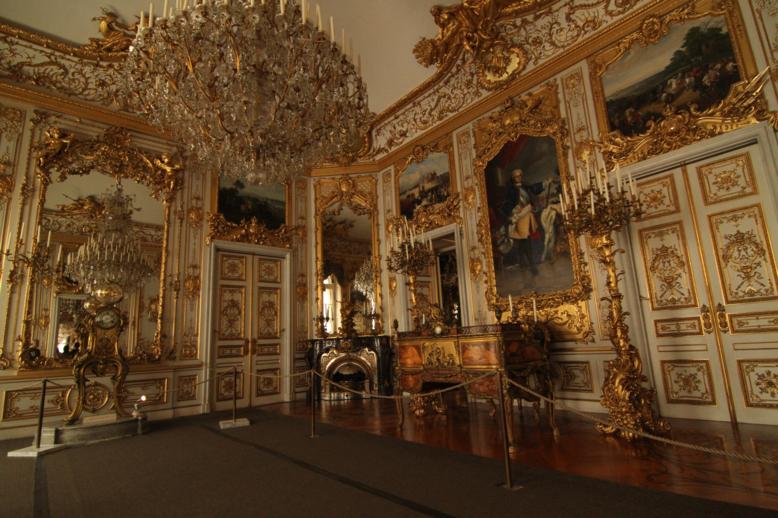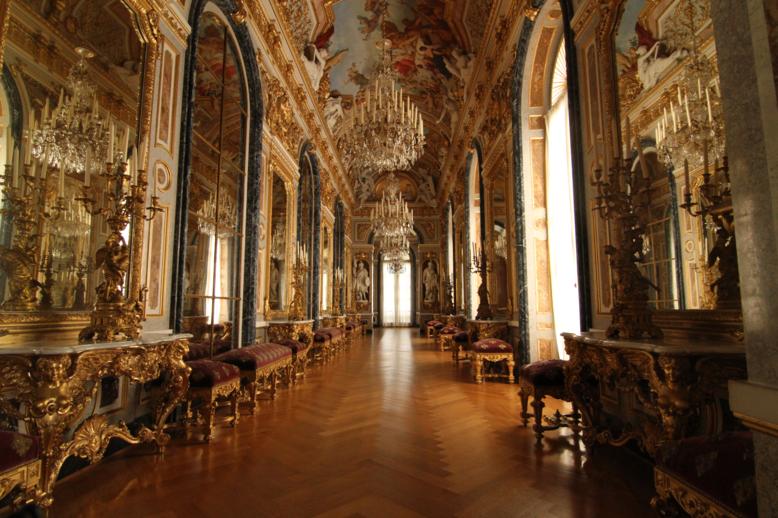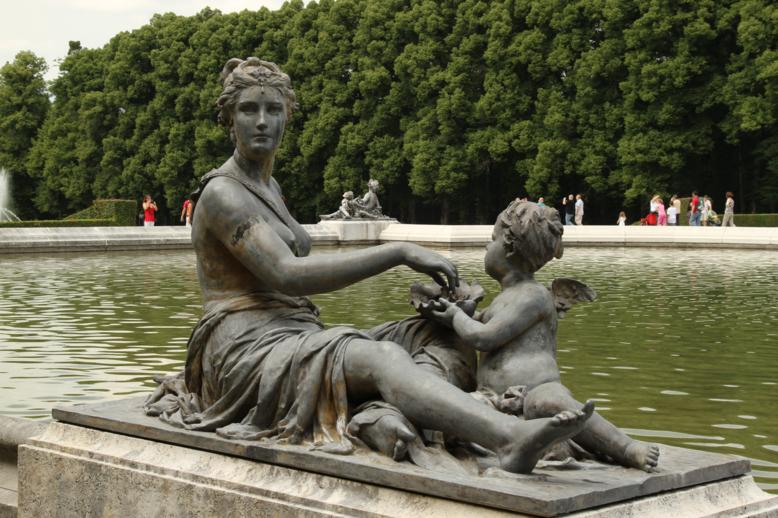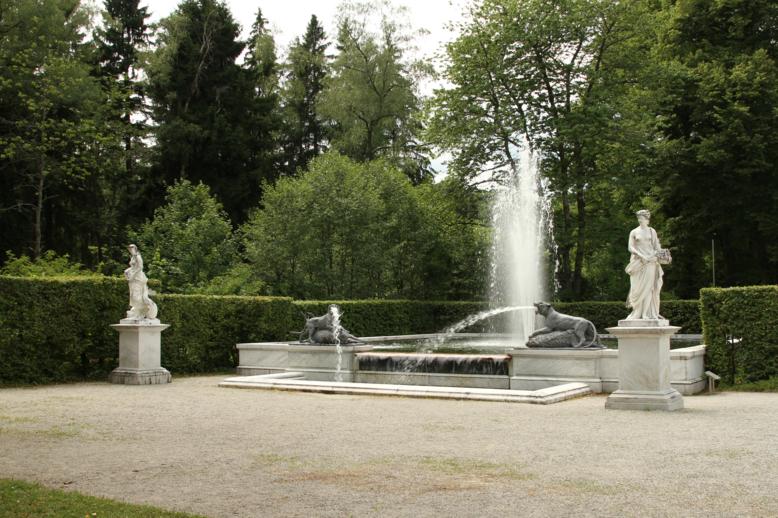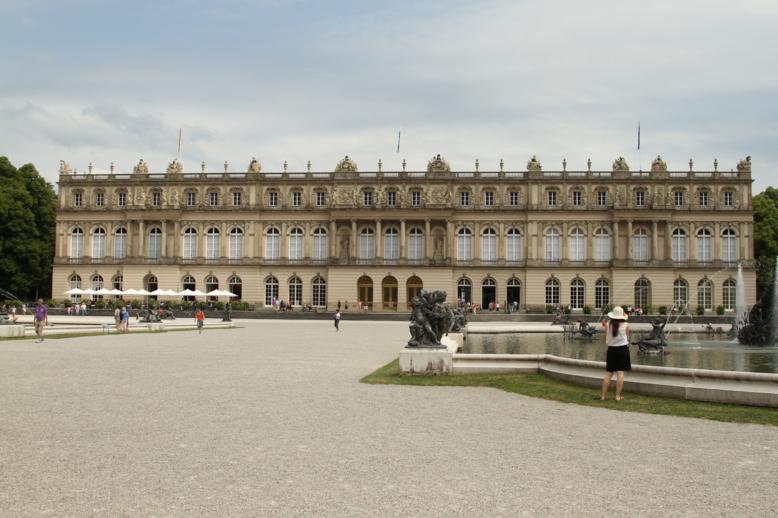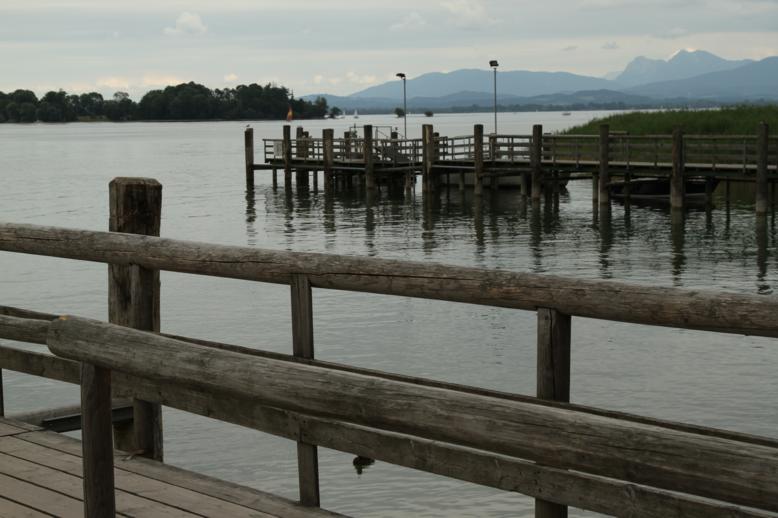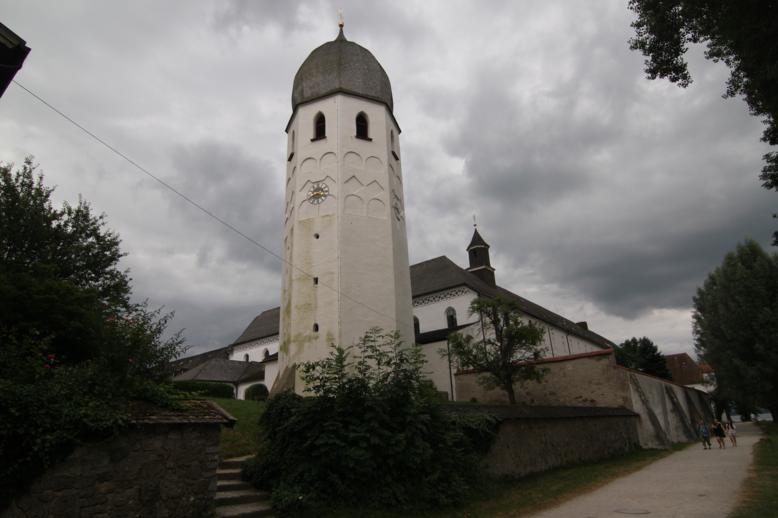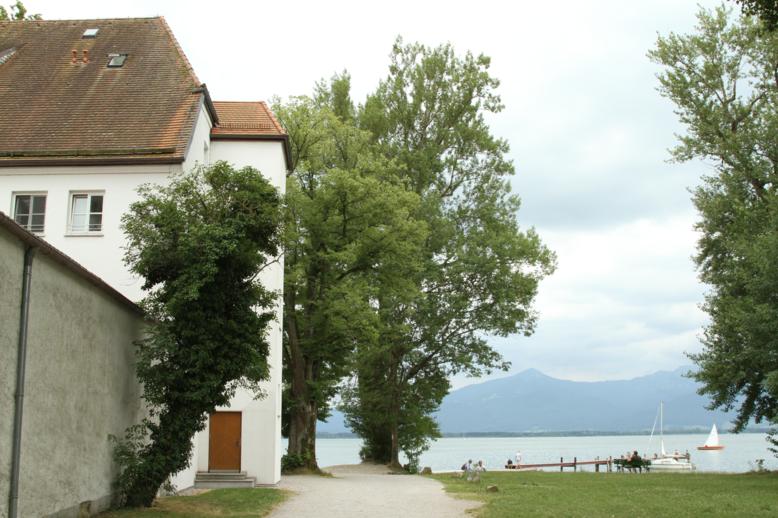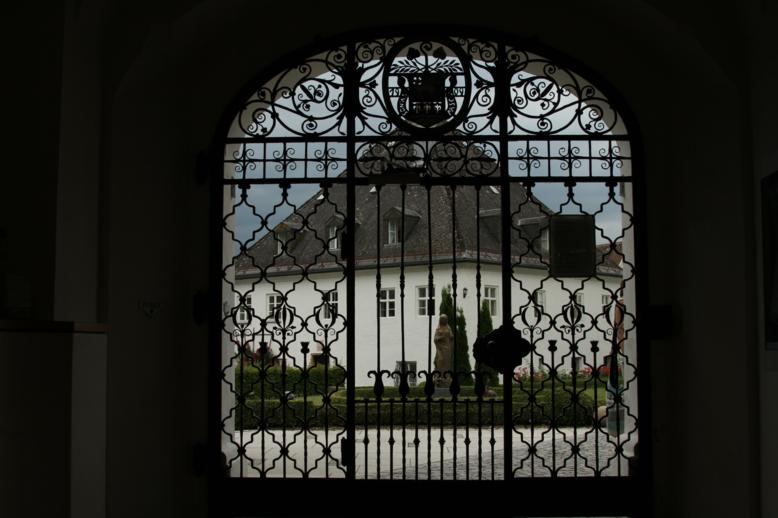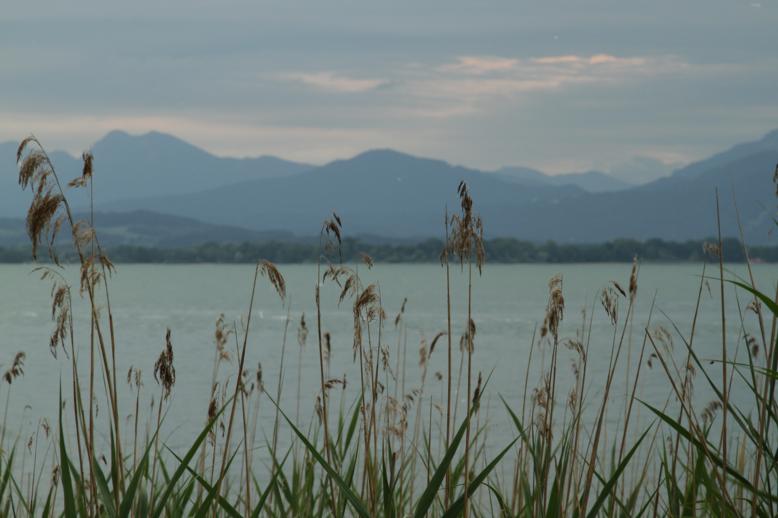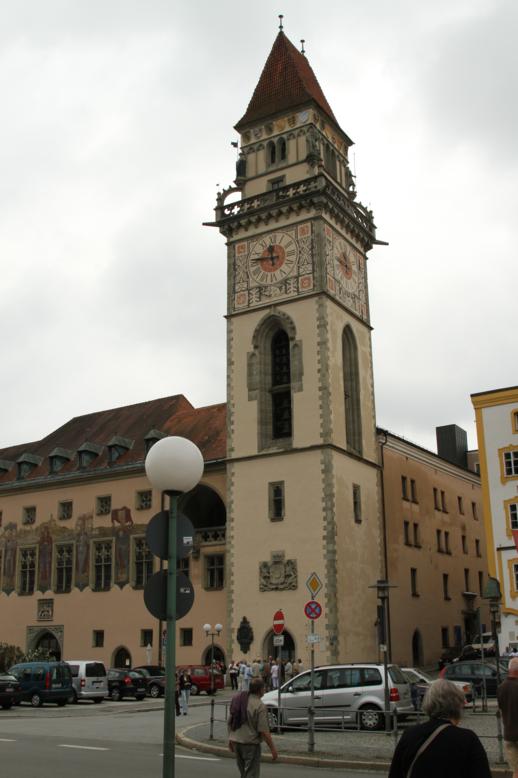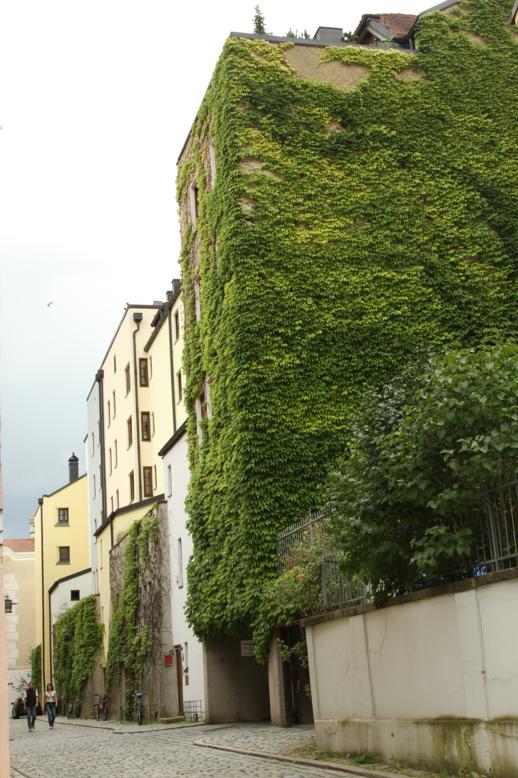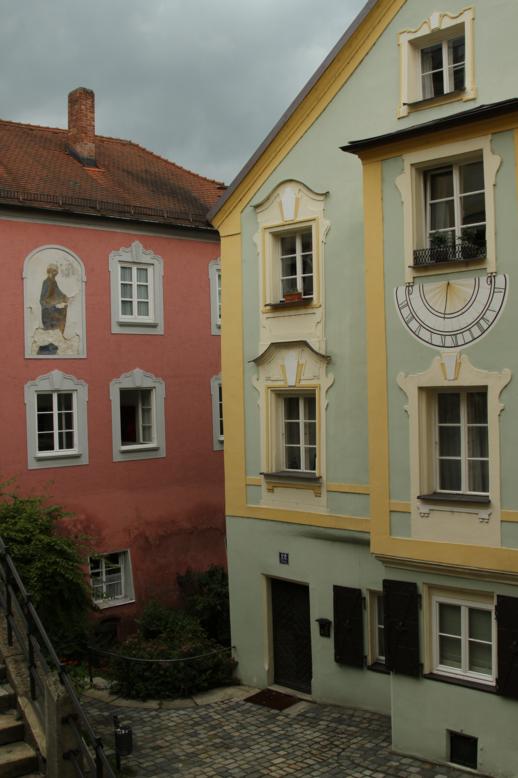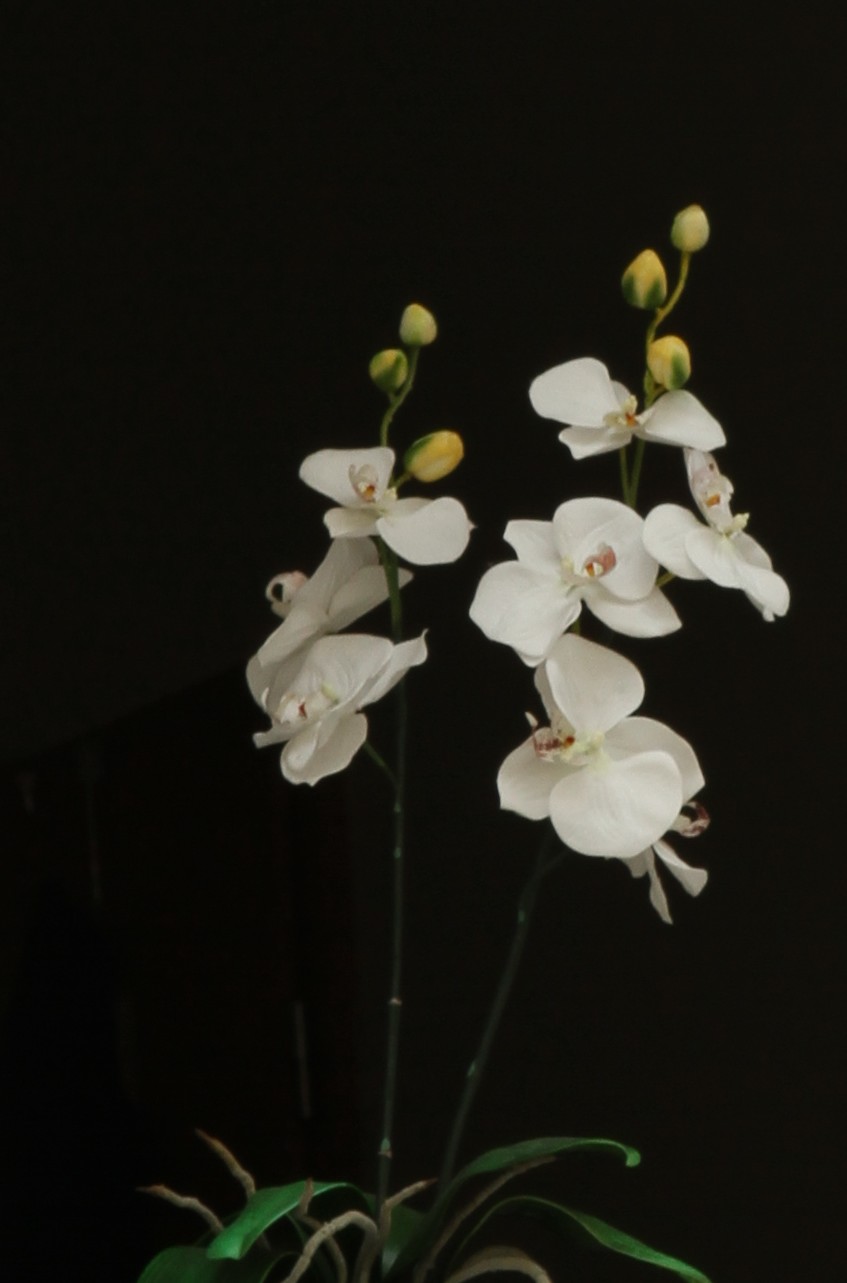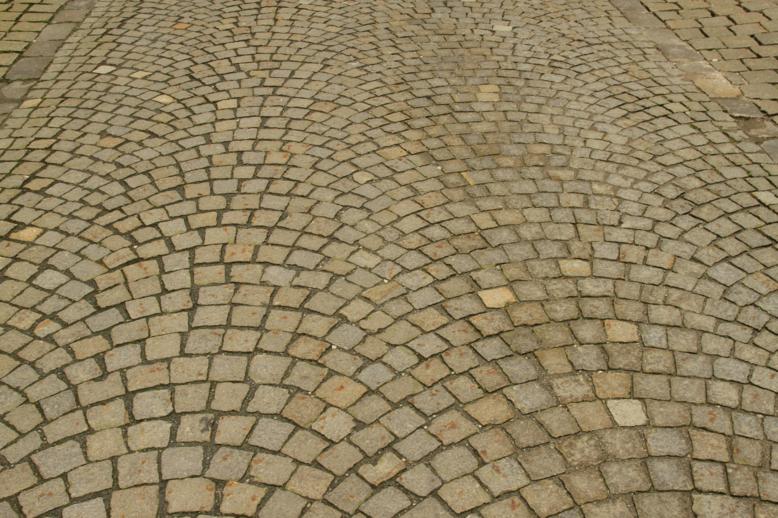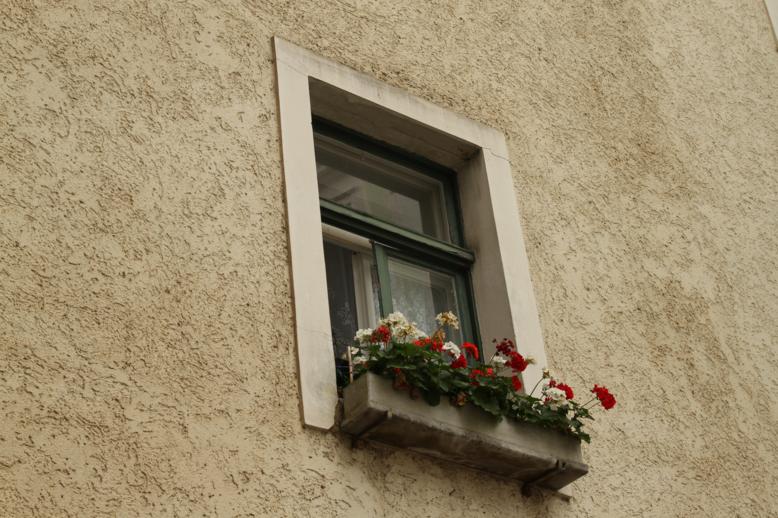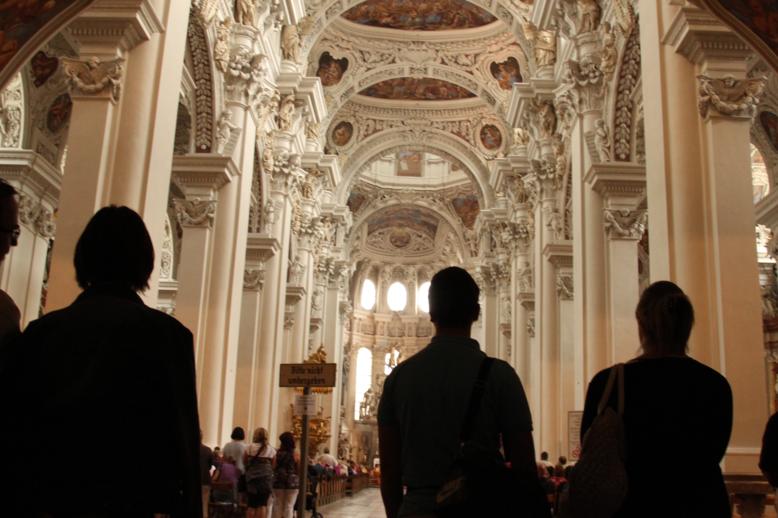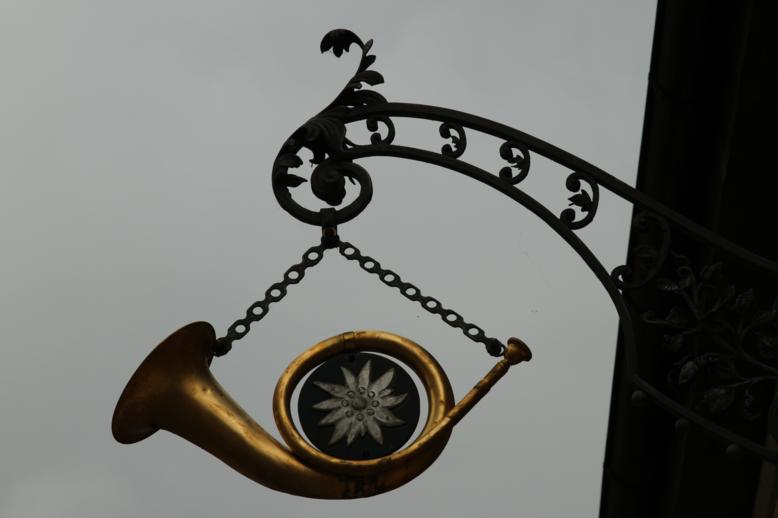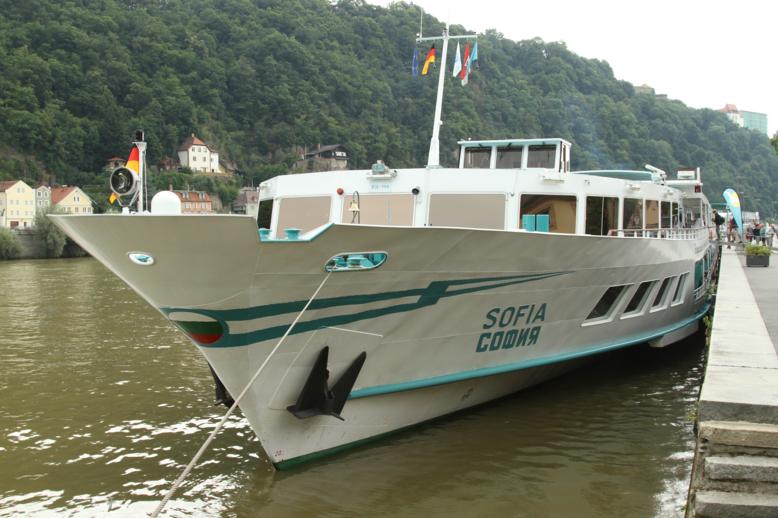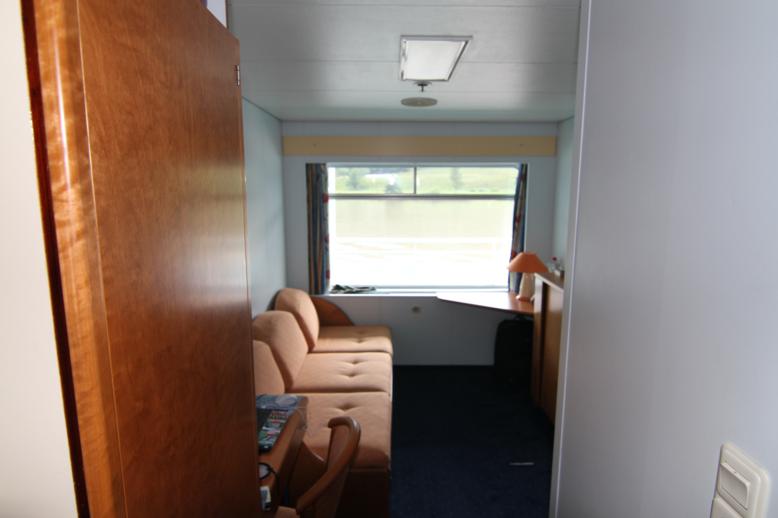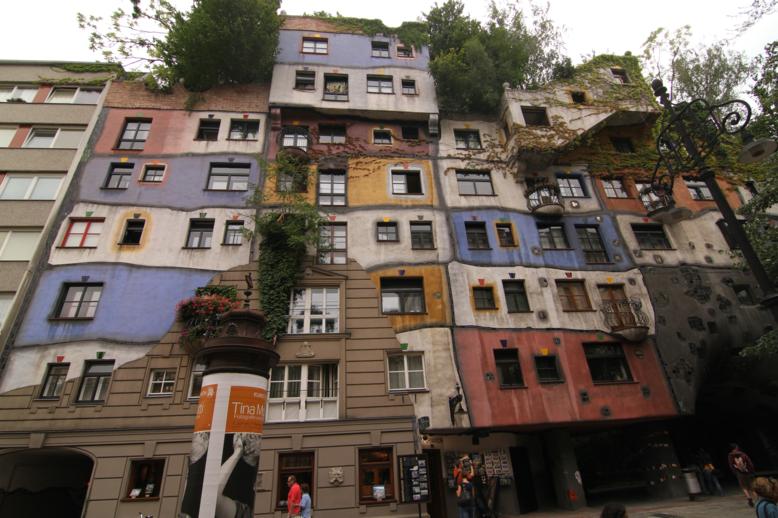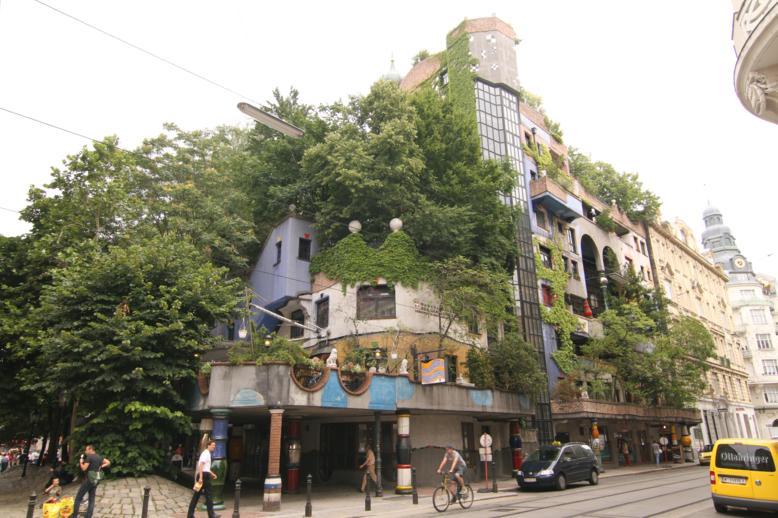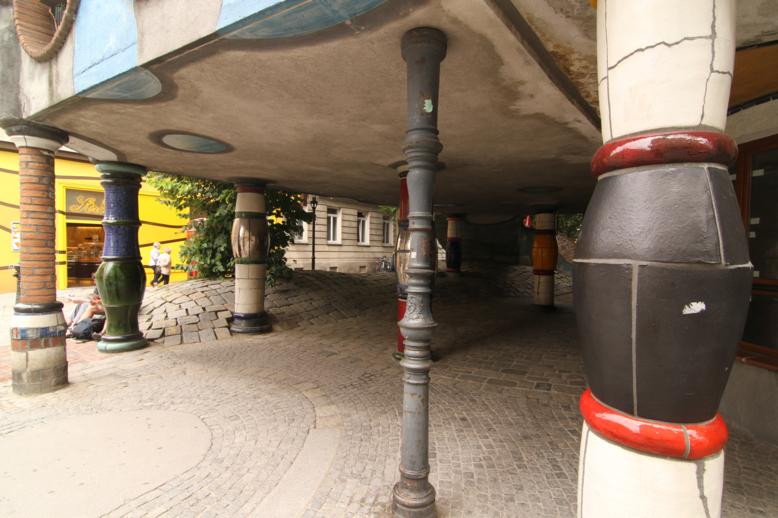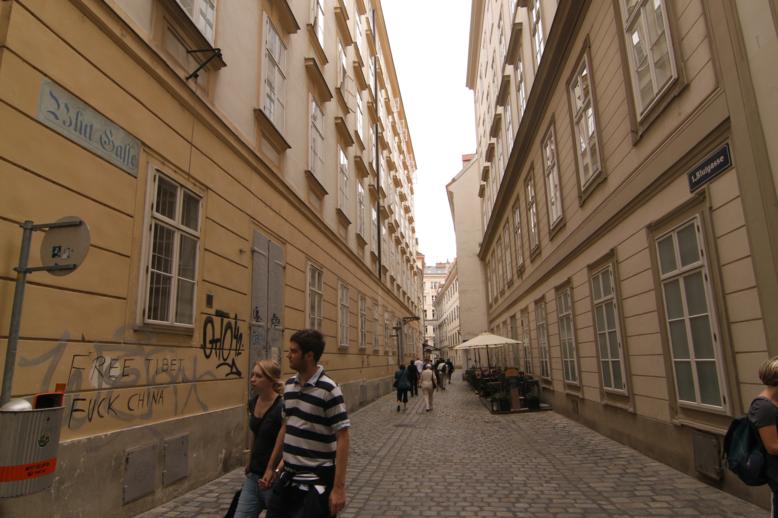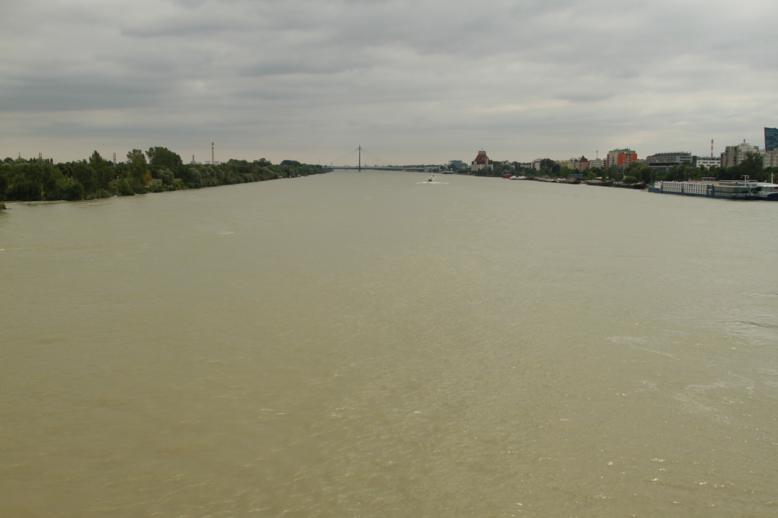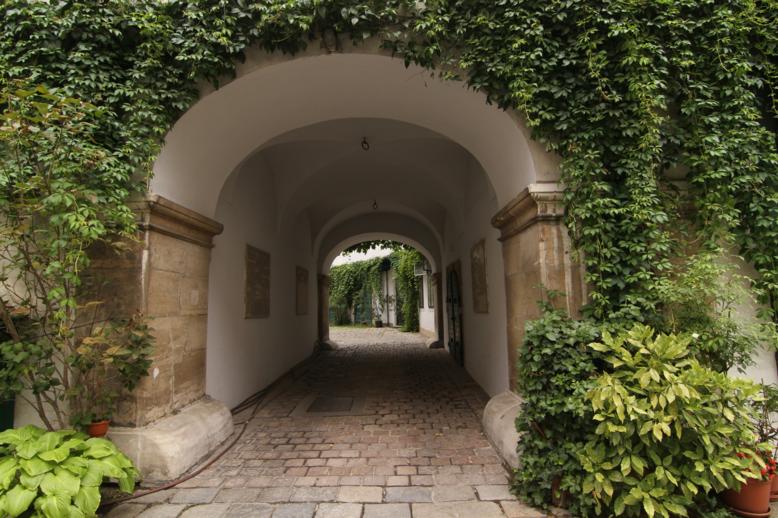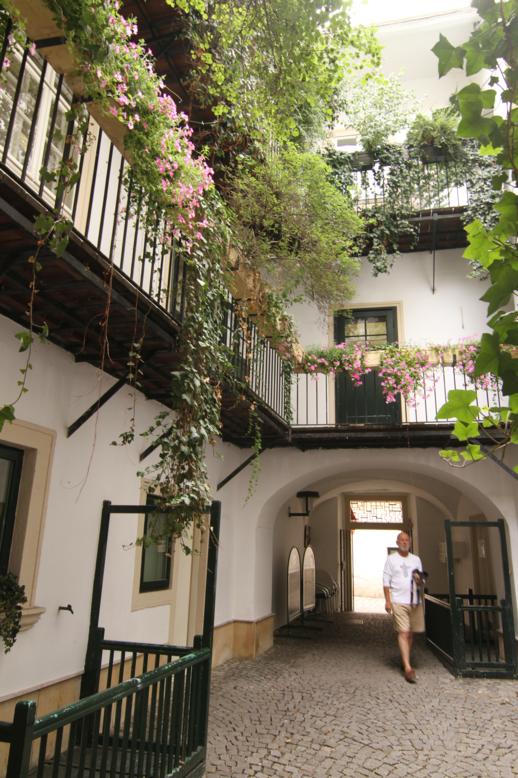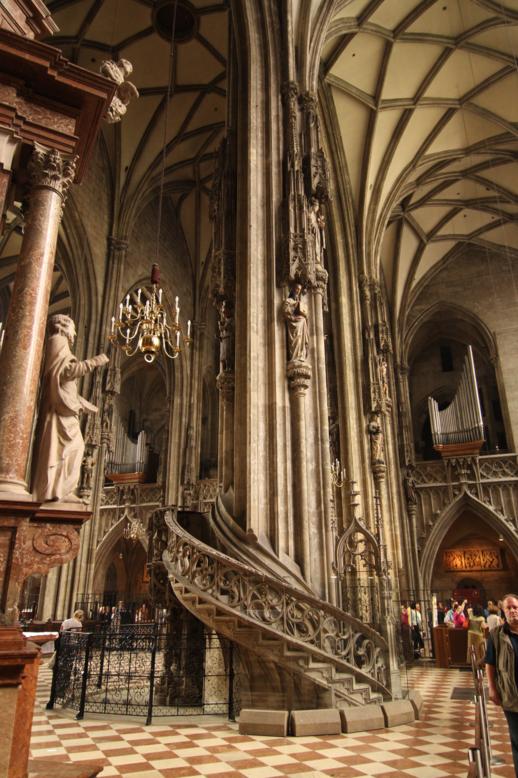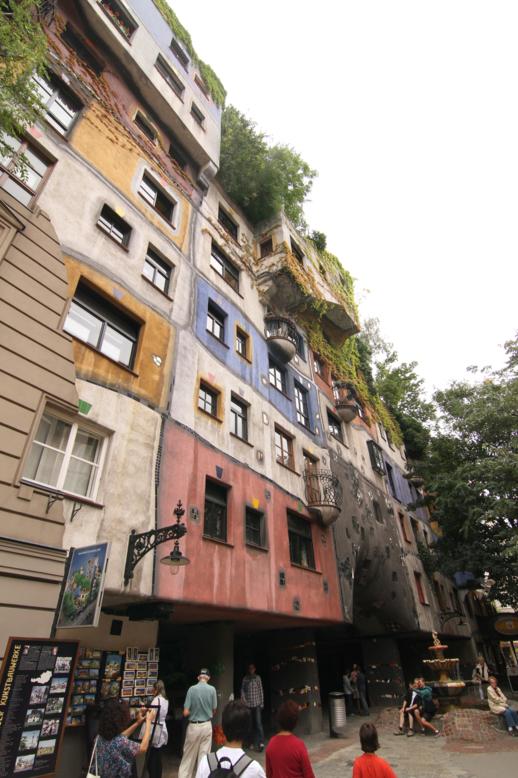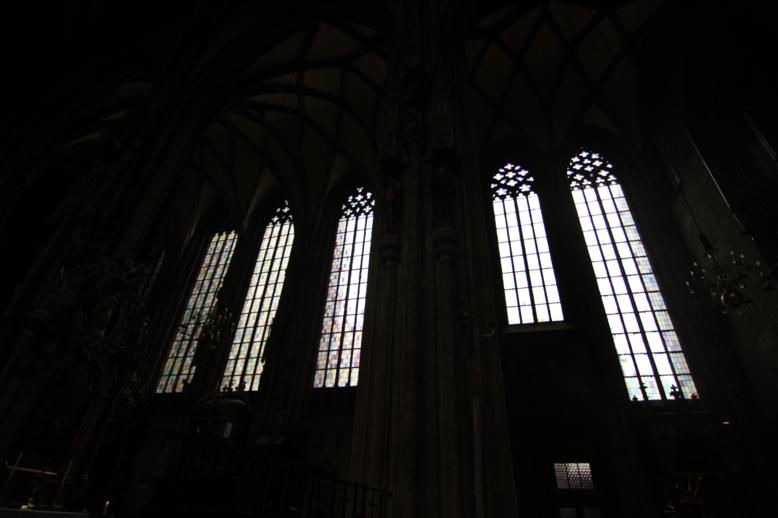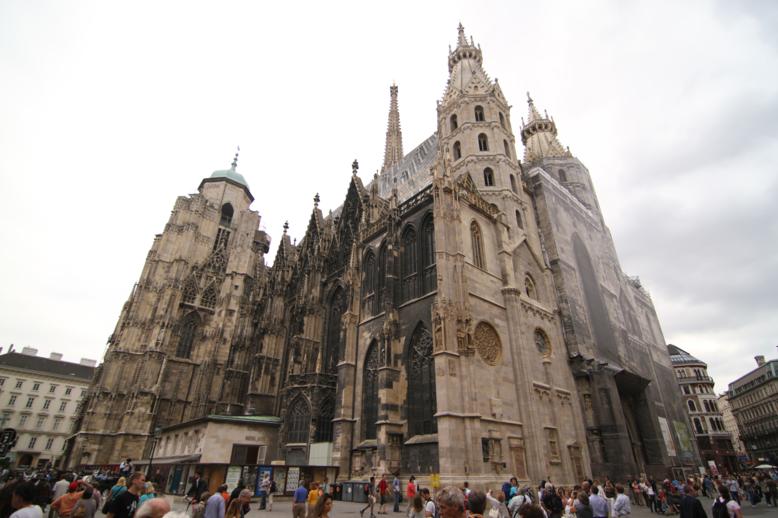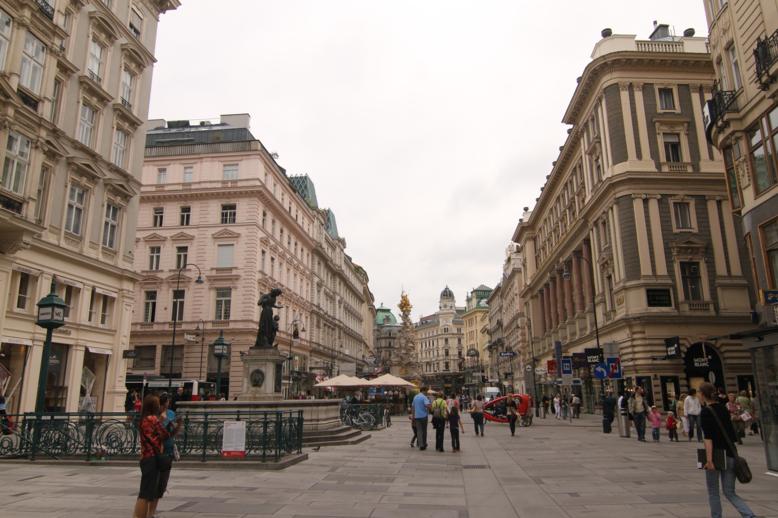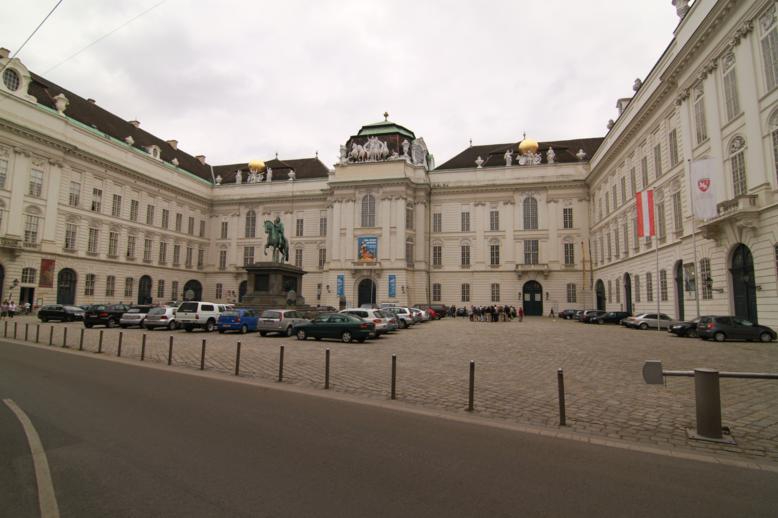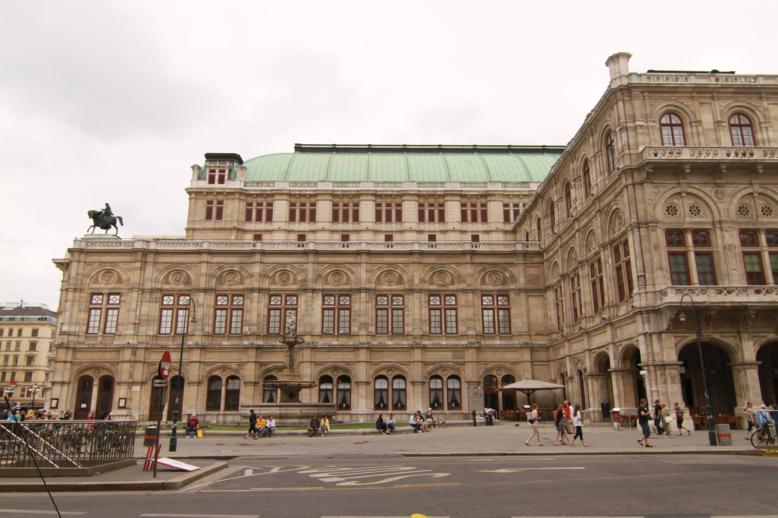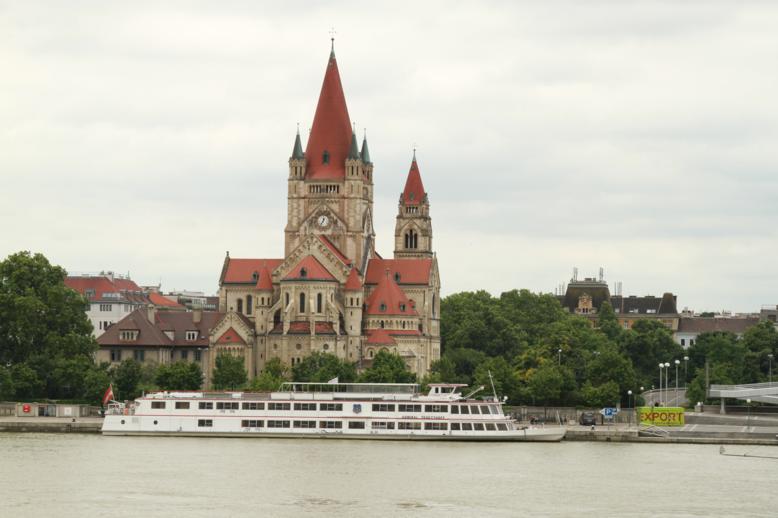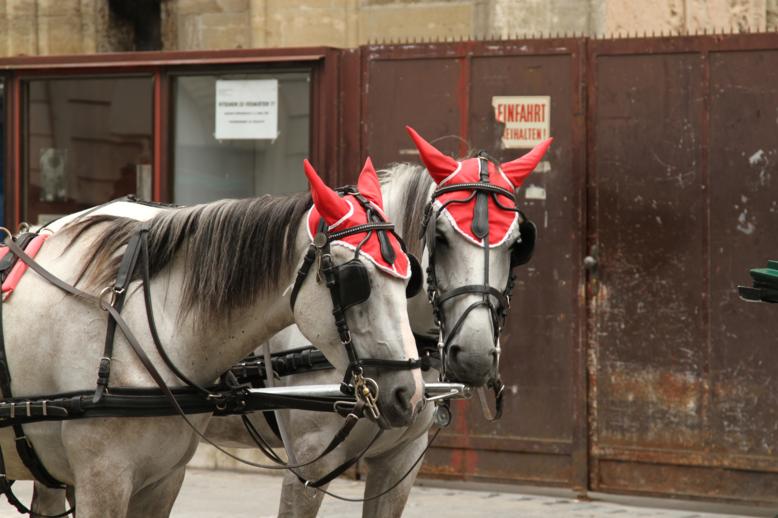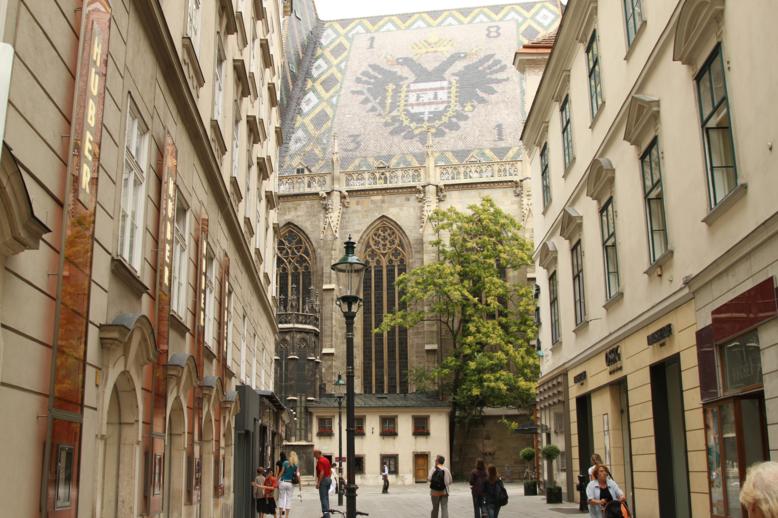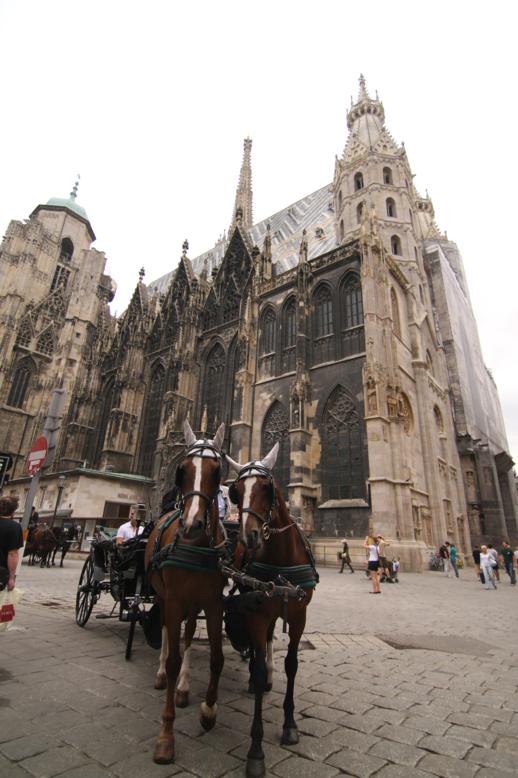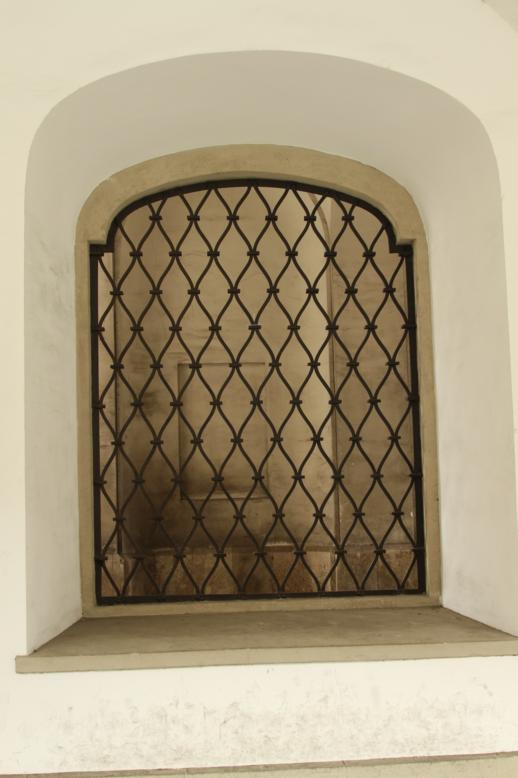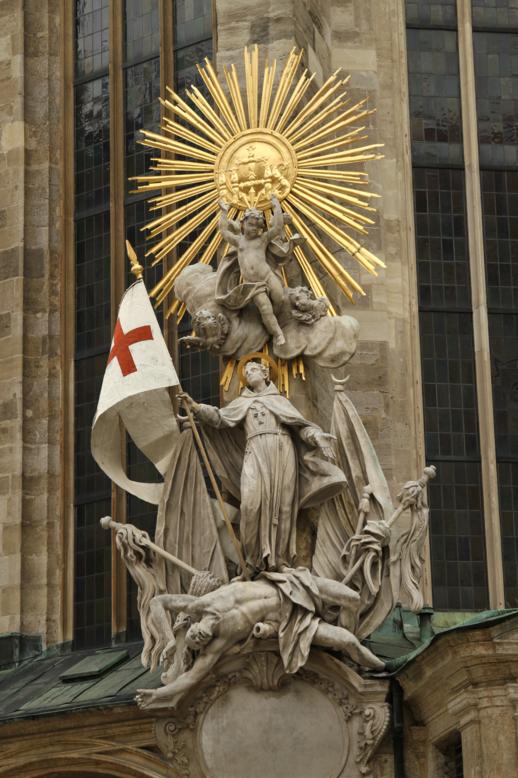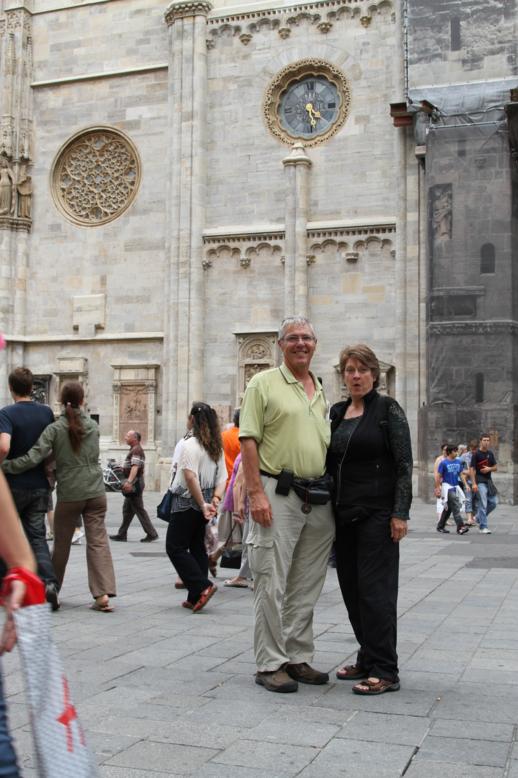|
Saturday
17th. July 2010
Today we traveled south towards Rosenheim and onto Prien. It soon
became obvious that the autobahn was choked beyond capacity. Radio
reports said the blockage extended for about 40kms. Our driver, Tony,
decided to take an alternate route along some of the minor roads. It
turned out these were just as clogged and the 90 minute journey took
double the time. The problem was a set of traffic lights in a tiny
village some 15 kilometres up the road that kept changing to red every
few minutes to let a tractor or some local traffic cross. We noticed a large number of buildings had solar collectors on the
roofs and solar energy is taken very seriously by the Bavarians.
We caught a ferry for a 20 minute
ride across the Chiemsee, the
largest lake in Bavaria and is sometimes known as the "Bavarian Sea". .
After a short walk along a forest path we were confronted with the very
imposing Royal Palace of Herrenchiemsee.
|
Royal
Palace of Herrenchiemsee
(New Palace)
From 1878 Ludwig II had a copy of Versailles Palace built on the
Herreninsel as a "Temple of Fame" for the Sun King Louis XIV of
France: it was thus intended purely as a monument to absolute
kingship and had no practical function. The architect Georg
Dollmann had to study the original model and even reconstruct
rooms which had long ceased to exist in Versailles.
The main rooms are some of the best examples of 19th. century
interior design in existence and are much more splendidly
furnished than in Versailles. No other porcelain collection is
so comprehensive or of such high quality, and the magnificent
textiles are equally unique.
One of the major ideas of the 19th. century, the "completion" of
historic styles, was realised in its finest form in this
building.
The park modeled on Versailles by Carl von Effner was intended
to cover a large part of the island. When Ludwig II died in
1886, only the central axis with its splendid fountains had been
completed, and only the core of the palace had been completed.
|
I took photos of the palace from the outside and some of the fountains and bronze
sculptures.
We were then
taken on a guided tour of some of the rooms inside. Taking photographs
inside the palace is forbidden, but somehow a few shots ended up on my
camera.
|
 |
We then caught the
ferry again and crossed to another island and made a short stop to take
some photos of the "Old" palace part of which became a nunnery.
"Frauenchiemsee Monastery was
founded by Duke Tassilo, and the monastery church was consecrated in 782
by Bishop Virgil of Salzburg. In 788 the monastery came into the
possession of Charles the Great, and passed from him to his grandson
Ludwig the German. After the Hungarian invasions, the monastery
flourished for a long period from the 11th to the 15th centuries. In
1728-1732 the complex, by then in a poor state of repair, was finally
rebuilt. After secularization it had a second founder in the person of
King Ludwig I, who was responsible for the re-establishment of the
monastery in 1837."
"The present monastery
building on Herrenchiemsee was constructed in the baroque era. The four
wings enclose a large, almost rectangular courtyard with an idyllic rose
garden.The convent tract (east wing) with halls and monks' cells was
built in 1645-49, the brewery tract (west wing) in 1661-65. In the
princes' tract (south wing), which dates from 1700-16, were the
monastery kitchen, state halls and accommodation for noble guests. The
courtyard was closed off with the prelacy tract (north wing), built in
1727-30."
As the thunder started and the rain fell, we took the paddle steamer
ferry back to Prien for the bus trip back to Munich. This time the trip
only took 90 minutes. As I write this it is still raining and
temperature has dropped making life in our un-air conditioned hotel room
a little more bearable.
Sunday
18th. July 2010
We checked out of the Hotel Wallis and the bus drove us to Passau, which
took about 3 hours. Passau is on the Danube near the Austrian and Czech
borders and is important because it is on the confluence of three
rivers, the Danube, the Inn and the Ilz. It is only after these three
rivers have joined that the Danube becomes navigable to larger boats and
barges. Passau is also called the "gate to the black sea" as it rises in
the Black Forest and runs into the Black Sea. Cruises along the Danube
have only become practicable since the formation of the European Union.
Prior to the EU passport controls etc into all the countries along the
way made the journey very tedious.
We were given a quick guided tour of the town by our guide Elisabeth who
then departed; leaving us to find lunch and board the MS Sofia (Length:
113.5m, Beam: 16m, Passengers: 218). We were told upon boarding that
this was a "German speaking ship" and that all documentation and
announcements would only be in German. It was only after the Life jacket
drill, which happened around us as we sat in the Panorama Bar without
life jackets and uncertain of what was happening, that the Cruise
organiser began giving out announcements in English as well.
Dinner was excellent, Bulgarian wine was about €14.00 a bottle and water
€3.00 per 1.5 litres. Our group was assigned an English speaking waiter
which was good. However basic things like a jug of water on the table
were missing and not available; the only option is to buy a bottle of
water
Monday
19th. July 2010 (Temperature: 23˚C)
It was a cool overcast morning as the river cruise ship moored in Vienna,
Austria,
at about 9:00am. The overnight journey had been comfortable and we had
negotiated nine locks along the way. The terrain was mainly flat with a
continuous band of large trees on either side of the river obscuring our
view of the countryside.
We had breakfast then with Rosemary and Hilary we began walking towards
the city centre. We asked directions from a young woman who suggested we
catch the underground train. We took her suggestion and each bought
€1.80 (A$2.70))one way ticket to St. Stephen's Square in the heart of
Vienna. We wandered around taking photos of the numerous museums,
churches, art galleries etc. before returning to the boat for a quick
lunch at about 12:30pm. At 1:30pm we were taken on a three hour guided
tour of the city by our local guide, Silvia. We passed a building
designed by Harry Seidler, who design No.1 Spring Street in Melbourne
and then onto the Hundertwasserhaus with its bright colours and freeform
walls.
Silvia then took us to the oldest
part of town and showed us the last surviving of the many housed lived
in by Mozart. This particular one was in Blood Lane (it got it's name
from the story that the Knights templars were murdered here and their
blood flowed down the lane). We then moved down the lane and took photos
through the window of the oldest (and partially underground) concert
hall in Vienna, the "Sala Terrena" where Mozart performed many concerts
and is still used today as a concert hall. (Below)
We then went inside St. Stephen's
Cathedral where we were allowed to take photos.
We took some more
photos around the centre of Vienna and returned to the boat at about
4:45pm
|




